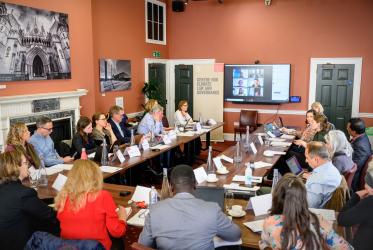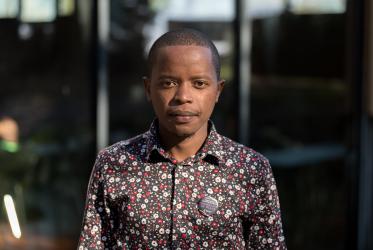* By Fredrick Nzwili
Millions of churches, mosques, synagogues and temples around the world that embrace sustainability in their investments, buildings and teachings are a symbol of hope for the planet struggling with an ecological crisis, said Joyce Msuya, a Tanzanian microbiologist who is the deputy executive director for the Nairobi-based UN Environment.
Msuya was speaking to nearly 350 people young leaders - mainly from faith organizations - on 15 July who had gathered in Kenya to mark the 4th anniversary of Laudato Si', the second encyclical by Pope Francis which addresses the urgency of environmental challenges.
“I am hopeful, but I am also a realist…I know that we need to show more ambition in our work to heal our planet,” Msuya told the conference in which the participants were marking the 5th anniversary of the (Roman) Catholic Youth Network for Sustainability for Africa.
According to the official, the UN is working hard every day to build a path to a sustainable future and was committed to working with faith organizations and youth around the world to achieve the 2030 agenda of sustainable development.
The body, in 2017, launched the Faith for Earth Initiative, which has already built a network of 750 members. It has also established the interfaith Rainforest Initiative, with the mission of harnessing the moral urgency and faith-based leadership to end the destruction of tropical rain forests.
“I call upon you to speak up and show leadership. We need your energy and your ideas,” Msuya told the young leaders from 50 countries across the world.
Cardinal Peter Kodwo Appiah Turkson, the Ghanaian who heads the Dicastery for Promoting Integral Human Development, in an address to the gathering, praised the UN for partnering with the faith community, church organizations and civil society to protect the fragile planet.
Turkson noted that in October 2018, the Intergovernmental Panel on Climate Change released its stark special report on the impacts of global warming, which indicate the global temperatures had reached 1.5 degrees centigrade - above the pre-industrial levels. He said the 1.5 degree centigrade was a critical physical threshold as well as a moral threshold.
“The planet is quickly approaching a breaking point and we cannot allow this threshold to be passed,” said Turkson, in a speech delivered on his behalf by Mgr. Bruno Duffe’, secretary at the dicastery. “The 1.5 degrees centigrade threshold…is the last chance to save all those countries and many millions of vulnerable people who live in the coastal regions. We cannot allow injustice to occur…it also useful to assume the 1.5 degrees as a religious threshold.”
The participants also heard that, with the crisis, an estimated one million animal and plant species are at risk of extinction due to human activity, according to the Intergovernmental Science-Policy Platform on Biodiversity and Ecosystem.
* Fredrick Nzwili is a freelance journalist based in Nairobi, Kenya.




